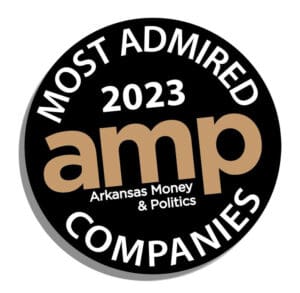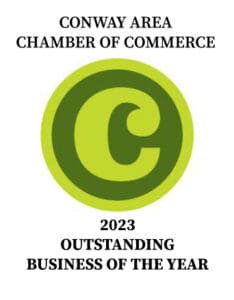The internet is increasingly becoming unsafe, especially with malicious viruses that exploit user vulnerabilities. A dangerous threat on the internet is ransomware, a malicious attempt to send infected emails and attachments.
Credential stuffing is also a rising threat whereby the hacker creates bots that match your credentials stolen from website leaks to gain access to user accounts like PayPal, work emails, and other confidential platforms.
For instance, in credential stuffing, a hacker can use a combination of your credentials stolen from Bloomberg, New York Times, or Amazon and match them to the Bank of America to illegally withdraw money.
Luckily, alongside this rising cyber threat, there has been a corresponding effort to counter any malicious attempts by hackers and unauthorized users. One of these developments is the rise of multi-factor authentication.
Multi-factor authentication, also known as MFA, requires multiple authentications to allow users access to their information or accounts. For instance, when using MFA, you’ll be required to use your smartphone or laptop to access your platform, be it an email, a PayPal user account, or even a work email.
MFA requires users to identify themselves using multi-verification credentials before accessing sensitive platforms or interfaces – financial platforms, payment platforms, banks, and user work accounts.
Most enterprises use MFA to protect user accounts and prevent sensitive information and data from potential leaks.
Consumers are now using multiple forms of authentication before accessing sensitive platforms and interfaces.
Prime examples of multi-factor authentication include:
- Something a user possesses, like a PIN or a verification code, or a physical token
- Something known to a user, like a PIN or a secret question
- Something a user is like fingerprints or facial recognition
Two-step verification is a unique multi-factor authentication that uses two methods to verify a user’s identity. MFA, on the other hand, involves at least two of the above factors.
So, why are MFA codes crucial?
1. Layered Defense
If you’re a large corporation like Microsoft or Google, or if you’re running a large operation like Amazon or Bid Buy, third parties are likely attempting to access your platform for multiple business reasons. Depending on the size of your company, the number of clients and customers coming in could be in the hundreds of thousands which is not easy to keep track of. So, creating an alternative form of authentication, be it physical, biometric, or even digital is vital for creating a layered defense.
2. Access Control
Passwords can be passed around and even duplicated. Luckily, multi-factor helps define who has control of your files and sensitive information. A 2021 Ponemon report shows that 51% of surveyed respondents are not assessing and evaluating the security of third parties before granting them access to sensitive files and information. The MFA codes help add an extra security layer, thus filtering out unauthorized users or dangerous third parties.
3. Meeting Regulatory Requirements
The Federal Trade Commission formulated the Consumer Privacy Law. This law dictates that any enterprise or organization responsible for holding consumer information must protect this information at all costs. The consumer privacy law requires organizations trusted with consumer information to pay all expenses related to the unlawful disclosure of this information to third parties.
The benefit of multi-factor authentication codes is to allow enterprises to meet this regulatory requirement. If consumers find you in violation of the consumer privacy law, you can pay hefty fines or lose your credibility as a business and as a brand. Multi-Factor Authentication codes enable enterprises to adhere to well-established regulatory frameworks.
4. Increase Customer Trust
Every customer wants to know their data and information are secure. Whether it’s banking information, financial credentials, or social security information, every customer must rest assured that their private information is safe. Two-factor authentication or MFA, may seem annoying and unnecessary. However, customers trust organizations that take precautions to protect them. As a customer, you’re likely to transact with an organization that takes extra precautions to protect you.
5. Prevent Fraud and Identity Theft
One key benefit of MFA is to prevent fraud and reduce identity theft. Individuals who use credential stuffing disguise themselves as the original owners before gaining access to authorized websites like banks, financial institutions, and even payment platforms like PayPal.
There’s no denying that the days of cracking a password and gaining access to sensitive, personal information are over, thanks to new forms of security. Most importantly, requiring more than two identity verification models proves harder for hackers.
MFA requires additional measures beyond the password to gain access to meaningful information and sensitive data. The requirement of additional information or identification proves hard for cyber criminals.
6. Reducing Operational Costs
Notifying customers of malicious and sensitive attempts to access their accounts costs time and money. Sometimes, customers do not know how to protect themselves.
So, as a business, sending users notifications about suspicious activity on their accounts proves destructive to your business venture because customers can lose trust if they suspect you’re unable to avert the risk facing their accounts.
MFA reduces helpdesk efforts and enables your staff to focus on sophisticated consumer issues. By using a multi-factor authentication model for user security, you bestow customers the power to protect themselves from the incidence of fraud and identity theft.
7. Solve Password Fatigue
NordPass estimates that the average consumer user has between 70 and 80 passwords. With so many passwords to recall when they try to log in to a website, users will use the same password for multiple accounts. Alternatively, users can create easy-to-remember passwords, making it easier for hackers to copy and duplicate.
Creating easy-to-remember passwords or sharing the same password for multiple accounts can lead to easy hacking, especially for well-trained cybercriminals. Using MFA solves the problem of password fatigue, adding an extra security buffer. It also ensures that hackers can’t hack even simple or repeated passwords.
8. Simplifying access
Users want to feel safe and protected. In addition, they want to make the login process into protected platforms easy. Single sign-on logins make MFA authentication easier.
The MFA uses a string of numbers, letters, and characters conveyed to a user for a simple login. One-time-passwords OTP can be sent to a user via phone or SMS, thus protecting private credentials, web-based services, or even data.
One-time-passwords reduce the risk by sending users time-sensitive codes, random numbers, and PINs to their mobile phones and push messages. Combining multi-factor authentication with an app’s convenience allows users to use a one-time password while maintaining high levels of security and confidentiality.
Contact Edafio Technology Partners to reinforce your cybersecurity health and prevent identity theft and fraud.
READY TO GET STARTED?
Make an Informed, Scalable Decision with Edafio








